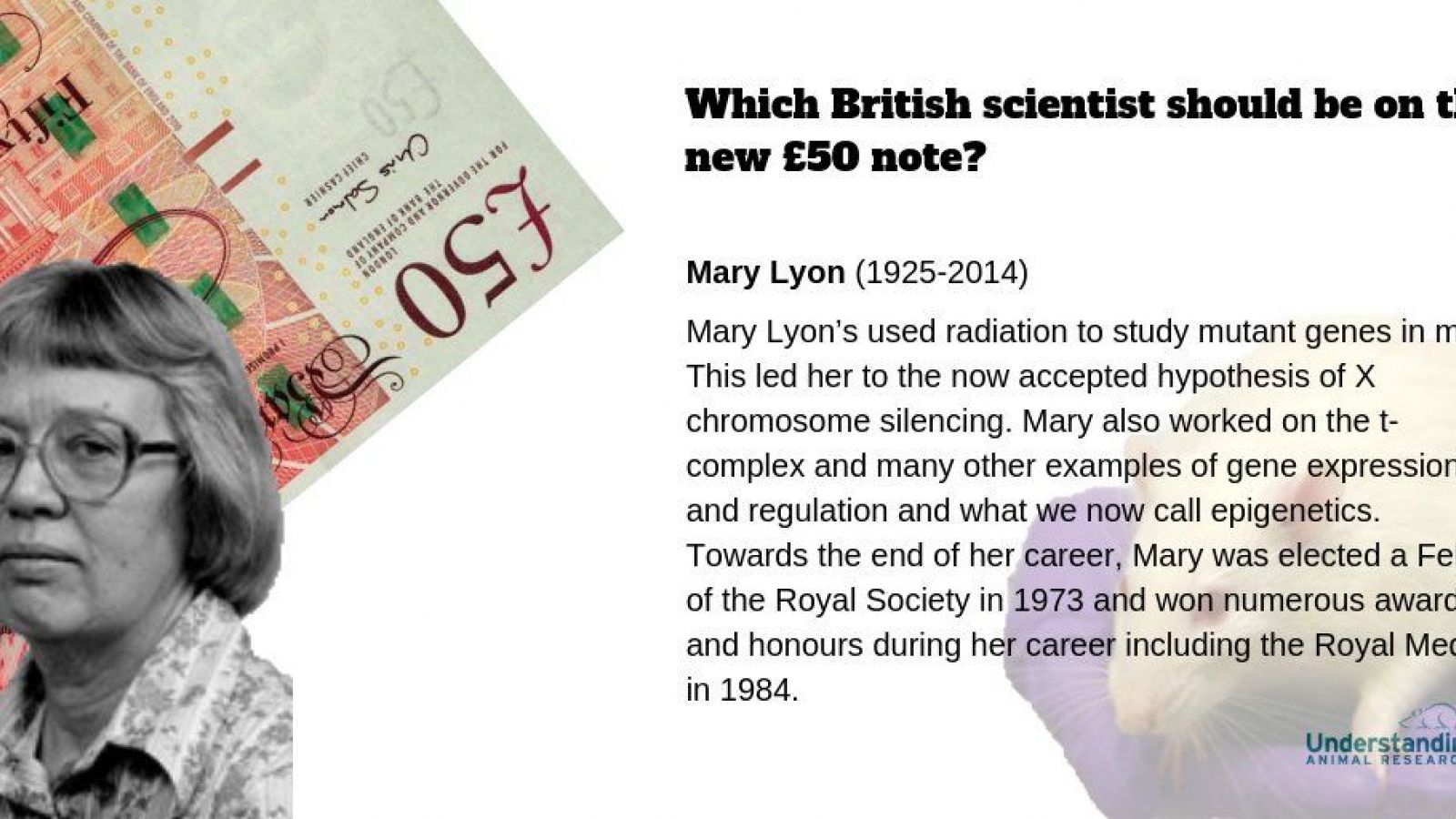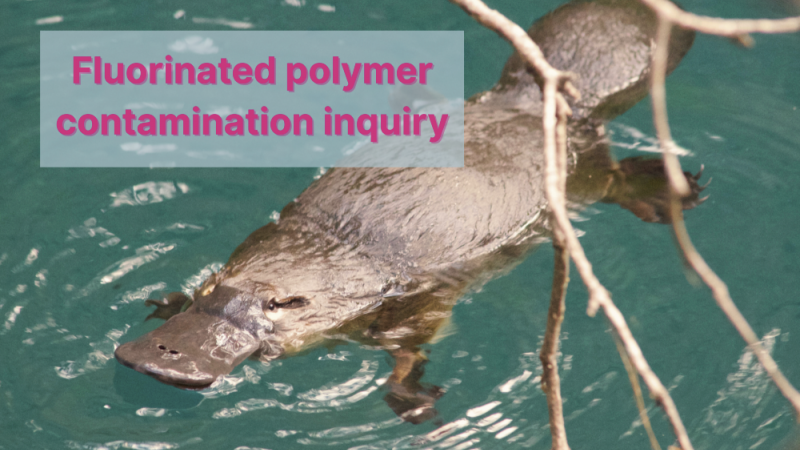Vote for one of UAR’s top six animal research scientists to be the new face of the new £50 note
The Bank of England is inviting nominations from the public for potential characters to appear on the new £50 note. The nominee must have contributed to the field of science, be real, be deceased, have shaped thought, innovation, leadership or values in the UK, and have inspired people, rather than divided them. Understanding Animal Research has chosen six prominent British scientists who meet these criteria, and who have additionally used animals in their work without which, the ground breaking scientific advancements of the last century would not have been discovered.
Sir Henry Dale (1875-1968)
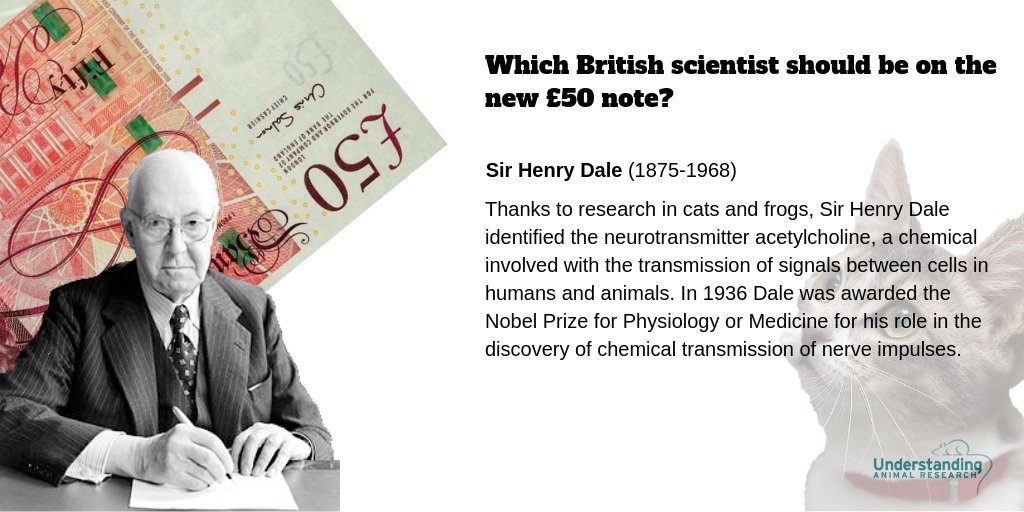 Thanks to research in cats and frogs, Sir Henry Dale identified the neurotransmitter acetylcholine, a chemical involved with the transmission of signals between cells in humans and animals. In 1936, Dale was awarded the Nobel Prize for Physiology or Medicine for his role in the discovery of chemical transmission of nerve impulses. In addition to his Nobel Prize, Dale boasted a successful career in science; he was the Director of the Department of Biochemistry and Pharmacology at the National Institute for Medical Research in London; he became a Fullerian Professor of Chemistry at the Royal Institution in 1942, and during World War II he served on the Scientific Advisory Panel to the Cabinet.
Thanks to research in cats and frogs, Sir Henry Dale identified the neurotransmitter acetylcholine, a chemical involved with the transmission of signals between cells in humans and animals. In 1936, Dale was awarded the Nobel Prize for Physiology or Medicine for his role in the discovery of chemical transmission of nerve impulses. In addition to his Nobel Prize, Dale boasted a successful career in science; he was the Director of the Department of Biochemistry and Pharmacology at the National Institute for Medical Research in London; he became a Fullerian Professor of Chemistry at the Royal Institution in 1942, and during World War II he served on the Scientific Advisory Panel to the Cabinet.
Sir Robert Edwards (1925-2013)
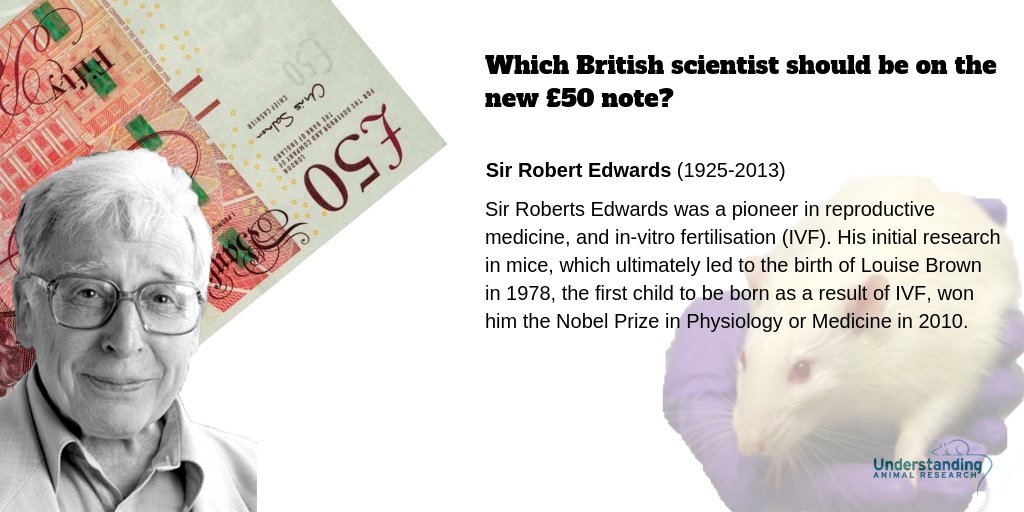 Sir Robert Edwards was a pioneer in reproductive medicine and in-vitro fertilisation (IVF) and in 1968 he successfully fertilised a human egg in the laboratory. Edwards’ initial research illustrated that female mice could be injected with hormones to make them produce several mature eggs at once, and after conception, developing embryos could be transferred from one mouse to another and still produce healthy offspring. Edwards then developed a nutrient-rich fluid to allow the fertilisation and early embryo culture, which ultimately led to the birth of Louise Brown in 1978, winning him the Nobel Prize for Physiology or Medicine in 2010. Edwards was one of the founders of the first IVF program for infertile patients and trained other scientists in his techniques. Additionally, Edwards was the founding editor-in-chief of Human Reproduction in 1986.
Sir Robert Edwards was a pioneer in reproductive medicine and in-vitro fertilisation (IVF) and in 1968 he successfully fertilised a human egg in the laboratory. Edwards’ initial research illustrated that female mice could be injected with hormones to make them produce several mature eggs at once, and after conception, developing embryos could be transferred from one mouse to another and still produce healthy offspring. Edwards then developed a nutrient-rich fluid to allow the fertilisation and early embryo culture, which ultimately led to the birth of Louise Brown in 1978, winning him the Nobel Prize for Physiology or Medicine in 2010. Edwards was one of the founders of the first IVF program for infertile patients and trained other scientists in his techniques. Additionally, Edwards was the founding editor-in-chief of Human Reproduction in 1986.
Sir Godfrey Hounsfield (1919-2004)
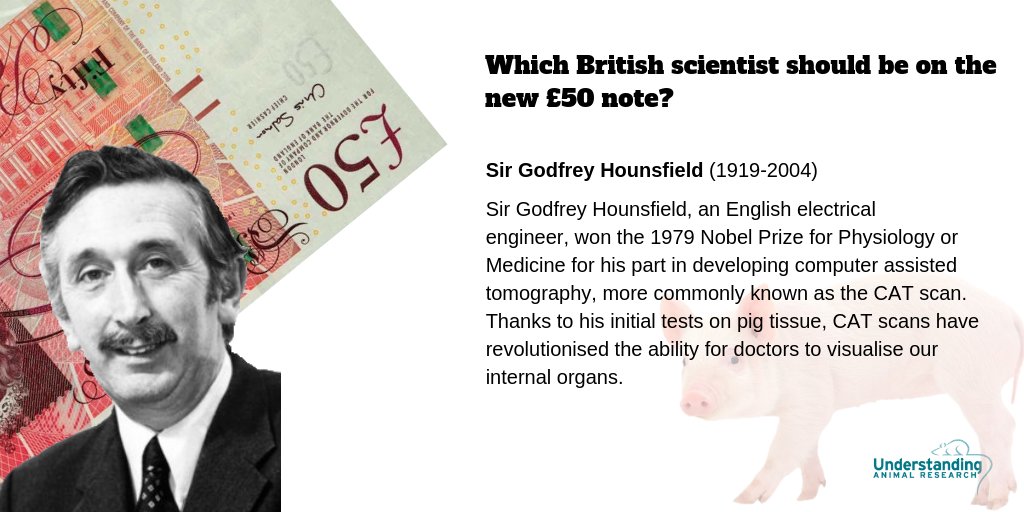 Sir Godfrey Hounsfield, an English electrical engineer, won the 1979 Nobel Prize for Physiology or Medicine for his part in developing computer assisted tomography, more commonly known as the CAT scan. Thanks to his initial tests on pig tissue, CAT scans have revolutionised the ability for doctors to visualise our internal organs. Hounsfield started by building a prototype head scanner and primarily tested it on a preserved human brain, followed by a fresh cow brain from a butcher shop, and later on himself. On 1 October 1971, CAT scanning was introduced into medical practice after a successful scan on a cerebral cyst patient at Atkinson Morley Hospital in London. In 1975, Hounsfield built a whole-body scanner.
Sir Godfrey Hounsfield, an English electrical engineer, won the 1979 Nobel Prize for Physiology or Medicine for his part in developing computer assisted tomography, more commonly known as the CAT scan. Thanks to his initial tests on pig tissue, CAT scans have revolutionised the ability for doctors to visualise our internal organs. Hounsfield started by building a prototype head scanner and primarily tested it on a preserved human brain, followed by a fresh cow brain from a butcher shop, and later on himself. On 1 October 1971, CAT scanning was introduced into medical practice after a successful scan on a cerebral cyst patient at Atkinson Morley Hospital in London. In 1975, Hounsfield built a whole-body scanner.
Mary Lyon (1925-2014)
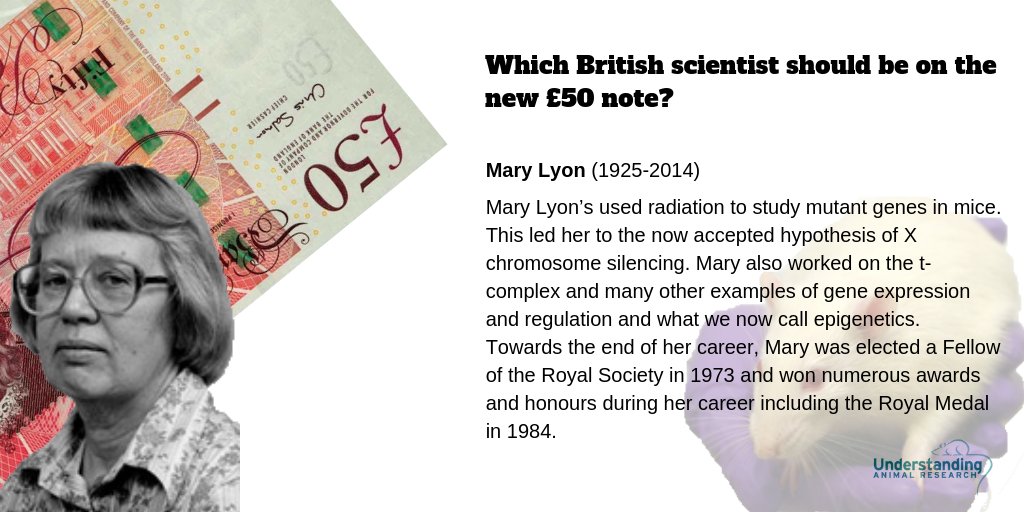 In 1955, Mary Lyon studied mouse mutations by breeding mutant mice using radiation therapy to study genetically modified genes. This led her to the now accepted hypothesis of X chromosome silencing. X chromosome silencing, which is also known as X-inactivation, is when one of the copies of the chromosome present in female mammals is inactivated. These females are therefore prevented from having twice as many X chromosome gene products as males, who only possess a single copy of the X chromosome. She discovered this after studying a mutation that affected male mice differently to the female mice.
In 1955, Mary Lyon studied mouse mutations by breeding mutant mice using radiation therapy to study genetically modified genes. This led her to the now accepted hypothesis of X chromosome silencing. X chromosome silencing, which is also known as X-inactivation, is when one of the copies of the chromosome present in female mammals is inactivated. These females are therefore prevented from having twice as many X chromosome gene products as males, who only possess a single copy of the X chromosome. She discovered this after studying a mutation that affected male mice differently to the female mice.
Mary also worked on the t-complex and many other examples of gene expression and regulation, and what we now call epigenetics. Towards the end of her career, Mary was elected a Fellow of the Royal Society in 1973 and won numerous awards and honours during her career including the Royal Medal in 1984.
Anne McLaren (1927-2007)
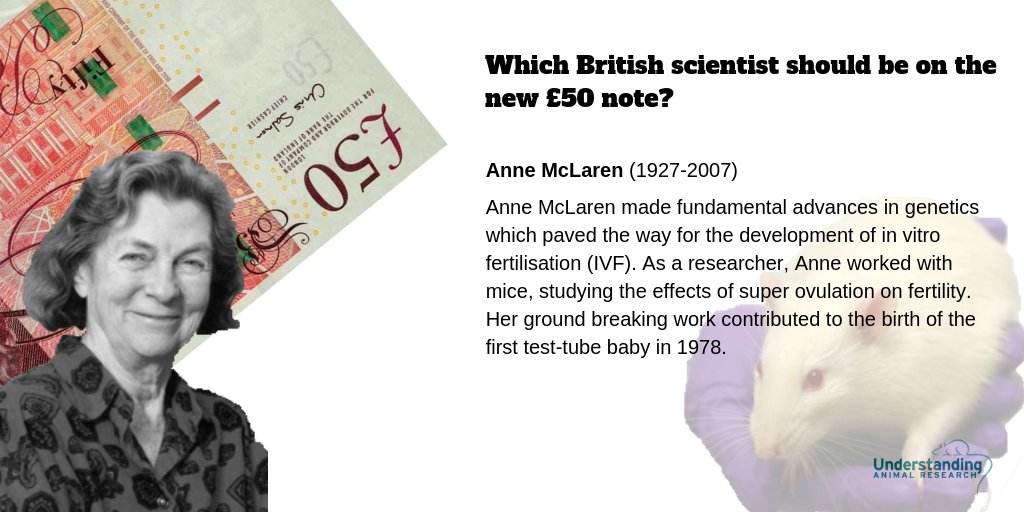 Anne McLaren worked as a zoologist and studied mice throughout her scientific career. In 1958, alongside fellow biologist John Biggers, Anne succeeded in growing a mouse embryo in a test tube, before transplanting it into a female mouse to be born “naturally.” This scientific advancement paved the way for an unprecedented leap in our understanding of reproductive mechanisms, and as a result, Anne’s research contributed to the development of IVF which is widely used today. Her ground breaking work led to the birth of the first test-tube baby in 1978. What’s more, during her time as an eminent scientist, Anne helped further the recognition of the importance of stem cells in the treatment of human disease.
Anne McLaren worked as a zoologist and studied mice throughout her scientific career. In 1958, alongside fellow biologist John Biggers, Anne succeeded in growing a mouse embryo in a test tube, before transplanting it into a female mouse to be born “naturally.” This scientific advancement paved the way for an unprecedented leap in our understanding of reproductive mechanisms, and as a result, Anne’s research contributed to the development of IVF which is widely used today. Her ground breaking work led to the birth of the first test-tube baby in 1978. What’s more, during her time as an eminent scientist, Anne helped further the recognition of the importance of stem cells in the treatment of human disease.
Sir Ronald Ross (1857-1932)
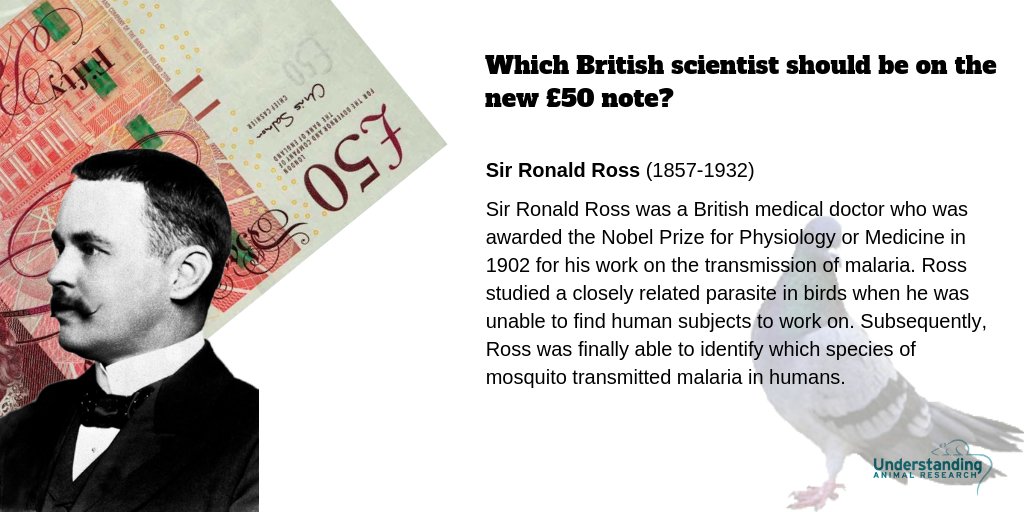 Sir Ronald Ross, a British medical doctor, was awarded the Nobel Prize for Physiology or Medicine in 1902 for his work on the transmission of Malaria. In 1898, Ross studied a closely related parasite in birds when he was unable to find human subjects to work on. Subsequently, Ross identified which species of mosquito transmitted malaria in humans. He discovered that the salivary gland of the mosquito is the storage site of malarial parasites, and that the parasites are released during biting. Ross worked on malaria prevention in many countries including West Africa, the Suez Canal zone, Greece, Mauritius, Cyprus and in areas affected by the First World War. Moreover, he founded organisations for malaria prevention in India and Sri Lanka and undertook many high-profile posts around the world dedicated to the study and prevention of malaria.
Sir Ronald Ross, a British medical doctor, was awarded the Nobel Prize for Physiology or Medicine in 1902 for his work on the transmission of Malaria. In 1898, Ross studied a closely related parasite in birds when he was unable to find human subjects to work on. Subsequently, Ross identified which species of mosquito transmitted malaria in humans. He discovered that the salivary gland of the mosquito is the storage site of malarial parasites, and that the parasites are released during biting. Ross worked on malaria prevention in many countries including West Africa, the Suez Canal zone, Greece, Mauritius, Cyprus and in areas affected by the First World War. Moreover, he founded organisations for malaria prevention in India and Sri Lanka and undertook many high-profile posts around the world dedicated to the study and prevention of malaria.
The deadline for submitting nominations is Thursday 14th December so head over to the Bank of England’s website to cast your vote for your favourite animal research scientist!
Last edited: 4 March 2022 14:24

